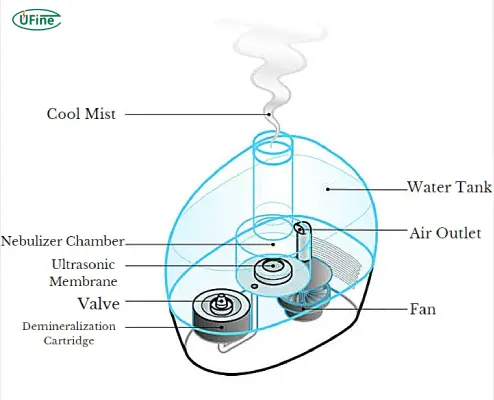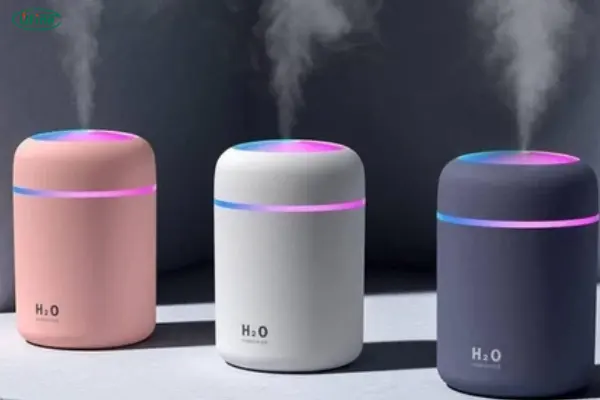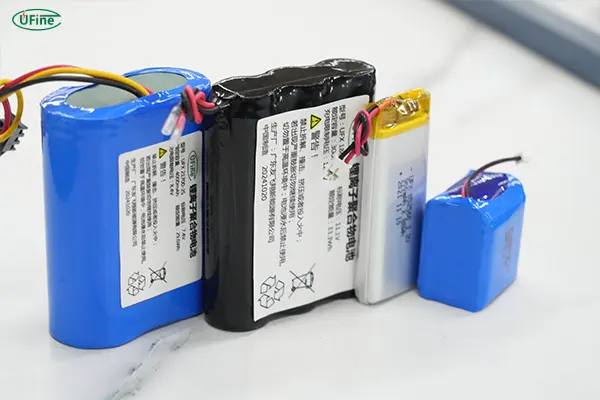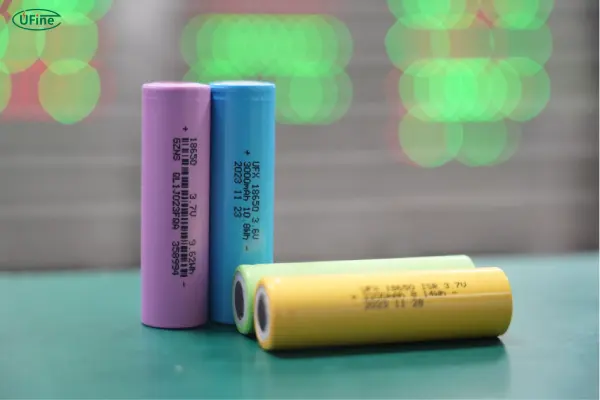
- Part 1. Understanding humidifier structure and working principle
- Part 2. How high-quality batteries improve humidifier performance
- Part 3. What type of battery does a humidifier use?
- Part 4. Top features to look for in a humidifier battery
- Part 5. How long can a humidifier battery last?
- Part 6. Built-in vs. removable batteries: what’s better?
- Part 7. How to replace or upgrade your humidifier battery?
- Part 8. Maintenance tips for humidifier batteries
- Part 9. Final words
- Part 10. FAQs
From keeping your skin hydrated during winter to relieving breathing discomfort, humidifiers serve a clear purpose. But none of that matters if your device dies mid-use or fails to work when you need it most. That’s why understanding your humidifier battery—how it works, what type you need, how long it lasts, and how to maintain or replace it—is essential.
Let’s explore everything you need to know, and guide you toward smarter choices that improve not just your air quality but also your everyday comfort.
Part 1. Understanding humidifier structure and working principle
At its core, a humidifier is a moisture-delivery system. It draws water from a tank and releases it as vapor into the air. While there are different types—ultrasonic, evaporative, and warm mist—the basic structure of a portable humidifier includes:
- Water Reservoir: Stores water that will be turned into mist.
- Mist Generator: Either a vibrating ultrasonic disc or heating element.
- Fan System: Disperses mist into the environment.
- Control Circuit: Adjusts power levels, mist output, and timing.
- Battery or Power Source: Delivers energy to run all these parts.
The battery is what powers the entire system when you’re not near a plug. For cordless or travel humidifiers, the battery determines how long and how well your humidifier can function. It’s not just a component—it’s the foundation of performance.
Part 2. How high-quality batteries improve humidifier performance
Here’s the honest truth: a poor battery makes a great humidifier useless.
Imagine turning on your portable humidifier during a long-haul flight or a hotel stay, only for it to die in 15 minutes. Frustrating, right? Now consider this—when your humidifier is powered by a high-quality lithium battery, the story changes entirely:
- Longer Runtime: A larger capacity battery ensures you get several hours of uninterrupted mist, not just a quick burst.
- Consistent Mist Output: A stable power supply prevents weak mist or performance drops.
- Reliable Start-up: No delays, no failed start-ups even after long storage.
- Reduced Overheating: Good batteries manage heat, protecting your device.
- Silent Operation: Stable power minimizes electrical noise and humming.
This is why battery quality isn’t optional—it’s a key factor in user experience.
Part 3. What type of battery does a humidifier use?
Most modern portable humidifiers rely on rechargeable lithium batteries, and for good reason.
Here are the main types found in humidifiers:
- Li-ion (18650): Cylindrical, durable, and widely used. Offers a high energy density, making it perfect for portable applications.
- Lithium Polymer (LiPo): Flat and compact, ideal for sleek designs. LiPo batteries are flexible in shape and size, making them perfect for ultra-portable units.
- Integrated Battery Packs: Some humidifiers use custom-built lithium battery packs sealed into the unit.
If you see specs like “3.7V 2000mAh”, you’re looking at a lithium battery. These are valued for their light weight, rechargeability, and ability to deliver steady voltage.
And if you need customized batteries for your humidifier project or device design, Ufine Battery is a reliable partner. As a leading Chinese manufacturer of custom lithium batteries, Ufine supplies everything from LiPo and LiFePO4 to 18650 cylindrical batteries, with flexible sizes, voltages, and capacities to fit any humidifier type.
Looking for a custom battery solution? Contact Ufine Battery today.
Part 4. Top features to look for in a humidifier battery
Choosing a battery shouldn’t be a guessing game. These are the 7 key features to evaluate when selecting the best humidifier battery:
1. Capacity (mAh)
Battery capacity directly affects runtime. A 2000mAh battery might last 4–6 hours, while a 4000mAh battery could power your device overnight.
2. Voltage Stability
Look for batteries that maintain a consistent voltage of 3.7V or 5V under load. This ensures your mist remains steady, not sputtering or fading.
3. Discharge Rate
Some humidifiers use more power during startup or mist bursts. A battery with a high enough discharge rate (e.g., 1C–3C) will handle it without stress.
4. Cycle Life
Top-quality lithium batteries can be recharged 500–1000 times. Always check the cycle life to ensure long-term reliability.
5. Safety Features
Overcharge, short-circuit, and thermal protection are critical for safe use, especially if you leave the device plugged in overnight.
6. Fast-Charging Support
Nobody likes waiting. Batteries with fast-charging capability (e.g., 1.5A or higher) save you precious time.
7. Temperature Resistance
Humidity control often matters most during winter, so your battery should handle low temperatures without voltage drop or shutdown.
These features will not only improve your user experience but also extend the lifespan of your humidifier.
Part 5. How long can a humidifier battery last?
A common question is: How long will it run before it needs a recharge?
Let’s break it down by battery size and usage:
Battery CapacityApproximate Runtime1500mAh2–4 hours2000mAh3–6 hours3000mAh6–8 hours4000mAh+8–12 hours
But that’s not all. The overall battery lifespan—how many months or years it lasts—depends on factors like charge cycles, mist intensity, and battery quality.
A good humidifier battery should give you at least 12–18 months of service with regular use. With proper care (more on that later), you could extend that to 2+ years.
Part 6. Built-in vs. removable batteries: what’s better?
There’s no one-size-fits-all answer, but here’s a comparison:
Built-in Batteries:
- ✔ Sleek design
- ✔ No handling needed
- ✖ Harder to replace
- ✖ Device becomes useless when battery fails
Removable Batteries:
- ✔ Easy to replace
- ✔ Option to carry spares
- ✔ Ideal for frequent travelers or professionals
- ✖ Slightly bulkier design
If you prioritize convenience and minimalism, go built-in.
If you value control and serviceability, removable is the way to go. For manufacturers or brands developing humidifiers, Ufine Battery can help design battery packs for both types, tailored to your product vision.
Part 7. How to replace or upgrade your humidifier battery?
If your humidifier isn’t holding a charge anymore, it may be time for a replacement. Follow these steps:
- Power off the unit and unplug it completely.
- Disassemble the casing carefully—usually via screws under the base.
- Identify the battery type—check voltage, dimensions, and connector type.
- Remove the old battery gently; don’t pull wires or bend connectors.
- Install the new battery—ensure polarity is correct.
- Reassemble the device and test before regular use.
Need a better replacement battery? Contact Ufine Battery to customize the ideal upgrade. Whether it’s higher capacity or a better discharge rate, Ufine can match your needs.
Part 8. Maintenance tips for humidifier batteries
You can easily extend the life of your humidifier battery with just a few habits:
- Charge before full drain – Try to recharge before the battery hits 0%.
- Unplug when full – Overcharging can stress the battery.
- Store at 50% charge – Ideal for long-term storage.
- Avoid extreme temperatures – Both heat and cold affect performance.
- Clean battery terminals – Dust or corrosion can impact connections.
- Use original charger – A mismatched charger may damage the battery.
Take care of your battery, and it will take care of your comfort.
Part 9. Final words
In the world of humidifiers, batteries may not get much attention—but they should. A high-performance humidifier battery makes all the difference between a frustrating experience and a smooth, quiet, and refreshing one.
Whether you’re upgrading, replacing, or developing a new humidifier product, don’t settle for average power. Go for safe, reliable, and custom-fit energy solutions.
🔋 Ufine Battery offers tailor-made lithium batteries for humidifiers and other portable electronics. With years of expertise in lithium polymer, 18650, LiFePO4, and ultra-thin batteries, we can provide exactly what your product or project needs.
👉 Contact Ufine Battery today to discuss your custom battery needs and take your humidifier experience to the next level.
Part 10. FAQs
Can I use a power bank instead of the built-in battery?
Yes, many USB humidifiers support power banks. Just check the voltage and current requirements.
What battery is best for travel humidifiers?
Compact LiPo batteries are great for travel due to their slim shape and light weight.
Why does my humidifier shut off after 10 minutes?
This could mean a weak or faulty battery. Try recharging or replacing it.
How do I find the right replacement battery?
Match voltage, capacity, size, and connector. Or, contact Ufine Battery for help.
Is it safe to leave my humidifier charging overnight?
If your battery has overcharge protection, yes. Otherwise, it’s best to unplug when full.
Related Tags:
More Articles
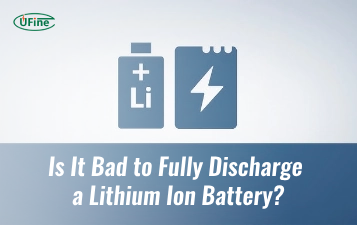
Is It Bad to Fully Discharge a Lithium Ion Battery?
Discover what happens if a lithium battery is fully discharged and how to safely recharge 12V batteries to prevent permanent damage.
Does a Higher mAh Battery Last Longer?
Does a higher mAh battery really last longer? Learn what mAh means, real battery life in hours, replacement safety (4000 vs 5000mAh), and real examples.
Exploring the Lithium Ion Battery Fire Temperature
Discover the lithium-ion battery fire temperature and learn how to stay safe. Get essential tips to prevent battery fires and protect your devices today.
The Ultimate Guide to 6s Lipo Batteries
A beginner-friendly guide to 6S LiPo batteries. Understand voltage, capacity, charging tips, safety rules, and real-world applications.
What is the NCMA battery? What is the difference between it and the NMC battery? Which one is better? This article will answer your questions.
